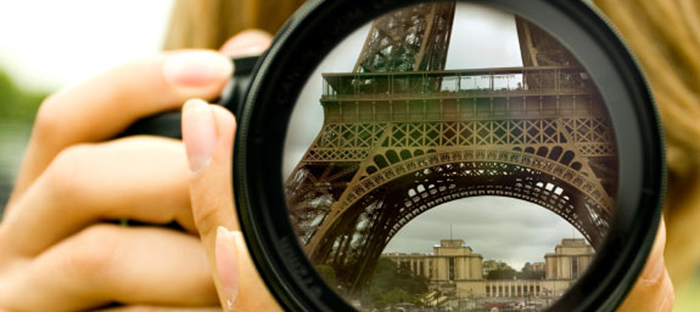4 Ways to Give Your Photos a Professional Look (Even if You’re a Newbie) – Travel

The market is fast becoming saturated with wannabe photogs who think that a quick clarity adjustment and a kitschy filter will make up for a low-quality picture, and when this happens it’s painfully obvious to a discerning customers.
If you want to break into photography, you don’t want to be one of those people. It’s not enough to rely on the built-in features that most photo-editing programs come with if your photos aren’t of good quality to begin with. Here are four ways to make sure your base product is worth editing for sale.
1. Shoot at the highest resolution your camera allows—RAW format recommended.
Not everybody can afford a camera that shoots in 36 megapixels, but it is essential to max out the capability of whatever equipment you’re using. Yes, you might need to purchase a bigger memory card, but if you’re not shooting at the max resolution, you’re not going to have as much room to work in post-production. Although new photographers should aim for techniques that don’t require a lot of additional editing, it will be easier to seamlessly tweak your photos if you’re not editing a cell-phone quality file. Shooting in RAW format, for instance, will allow your camera to transmit a great amount of data to your computer, thus offering greater flexibility in editing. If you’ve invested in a camera with a decent sensor, at any rate, a higher-resolution photo will be easier to manipulate and the edits will produce more convincing results.
2. Take ten times more photos than you think you’ll need—minimum.
Taking professional-level photographs is as much a numbers game as it is a question of talent. Take, for example, a professional wedding photographer; if you get your money’s worth, they’ll take thousands of pictures throughout the day. Of those, a client may only see 400–500 edited stills. Why is this?
Photography, particularly of a moving subject like a human, is notoriously touchy. The slightest change in the angle of a person’s face can change the whole composition of the photo, and it’s best to err on the side of caution. While experienced photographers may have a set of go-to poses that usually produce good results, the last thing a new photog wants is to get home and find that they have nothing to work with.
Don’t be afraid to shoot a hundred takes of a single subject. Photographers learn by doing—don’t undersell yourself by not investing the practice time.
3. Never put a blurry photo through post-production.
One waving red flag that a person is a photography amateur is a portfolio of nicely composed, nicely balanced photos—that aren’t focused in the right spot.
It might be tempting to use the clarity enhancement feature in your photo editing software of choice and post it anyway—don’t. The bottom line with photography is that a blurry photo is a bad one; there’s no way to edit out that aspect of it, and to spend the time adjusting colors and cropping is pointless. We’ve all seen the ubiquitous family portrait that could have been nice…except the focus is centered on a nearby flower or tree branch and not the family members’ faces.
This ties back into tip #3; shoot hundreds of frames, and while you’re at it, learn exactly how the focus mechanism on your camera works. And if you find that a photo has the wrong focus or is not in focus at all, discard it. To feature it in a portfolio is a newbie mistake.
4. Keep color adjustments natural and to a minimum.
With all the powerful software available on the market, it can be tempting to slap on effect after effect on your photos. However, the first thing a new client will realize is that you’re relying on filters, not solid technique.
Of course, this doesn’t mean that photographers shouldn’t make adjustments to unedited photos—those features are included in the software for a reason. Just don’t go crazy with color balances. The idea is to make your photos look naturally striking, so adjustments must be used with a gentle and precise hand. Go too far, and your photos will take on an Instagram-like quality. That’s nice for Instagram; not so much for an up-and-coming photographer who hopes to go pro.
If you’re hoping to eventually make a name for yourself as a photographer, you can start by using these tips to make sure that your portfolio has a polished, pro look to it—even if you just got your camera last week. The key is to keep practicing—so get out there and take photos…thousands of them.
Ken McDonald is a photography enthusiast who loves everything about digital cameras. Self confessed camera addict who has way too many camera lenses and photography accessories.







